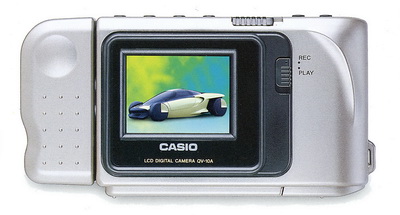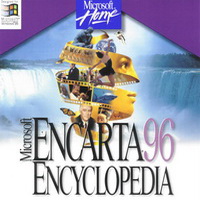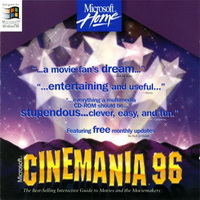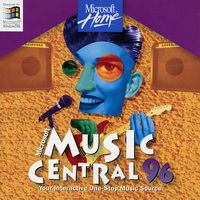Articles
I have eight articles currently, the History of Music, the History of Midi, the History of my Musical Creations, the History of my BBC Micro Music, a Brief History of the Single, Technology and Media in 1996, Autographs and Tomorrow's World - The Jam Spreading Myth.
Technology and Media in 1996
Twenty years ago may not seem like a long time, but the field of technology it can be. Referencing some publications of the time, such as Empire Magazine, PC Answers, Computer Life, CD-ROM Magazine and others, here's what was cutting edge back then...
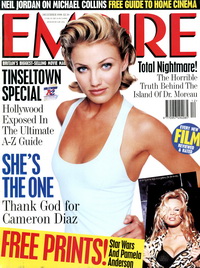
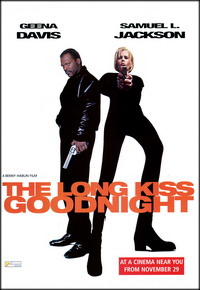 I was a long subscriber to EMPIRE magazine and they always rewarded their subscribers with exclusive gifts. In January 1996, if you took out a year's subscription
to the magazine for £29.40, you got a choice of a black or grey long sleeved shirt with "I just want to say one word to you...Plastics". I had taken my
subscription out years before, but I did have a white long sleeved shirt with "You talkin' to me?" on the back. Films due for release around that time
were The American President (December 8th), From Dusk Till Dawn (June 7th), Seven (January 5th) and Showgirls. Carolco Pictures (Rambo, Terminator 2, Total Recall,
Air America, Basic Instinct) filed for bankruptcy and Forrest Gump was released on Video CD for £19.99. Video games were often advertised in the magazine, and
Wing Commander IV and Star Wars Rebel Assault II were both out for the PC. Woolworths advertised Judge Dredd and Species (both out on video) and later in the
year, Striptease (September 20th) and Multiplicity (September 27th) were advertised with The Long Kiss Goodbye (November 29th) in the December issue. Remember
that the magazine came out a month ahead of the date on the cover.
I was a long subscriber to EMPIRE magazine and they always rewarded their subscribers with exclusive gifts. In January 1996, if you took out a year's subscription
to the magazine for £29.40, you got a choice of a black or grey long sleeved shirt with "I just want to say one word to you...Plastics". I had taken my
subscription out years before, but I did have a white long sleeved shirt with "You talkin' to me?" on the back. Films due for release around that time
were The American President (December 8th), From Dusk Till Dawn (June 7th), Seven (January 5th) and Showgirls. Carolco Pictures (Rambo, Terminator 2, Total Recall,
Air America, Basic Instinct) filed for bankruptcy and Forrest Gump was released on Video CD for £19.99. Video games were often advertised in the magazine, and
Wing Commander IV and Star Wars Rebel Assault II were both out for the PC. Woolworths advertised Judge Dredd and Species (both out on video) and later in the
year, Striptease (September 20th) and Multiplicity (September 27th) were advertised with The Long Kiss Goodbye (November 29th) in the December issue. Remember
that the magazine came out a month ahead of the date on the cover.
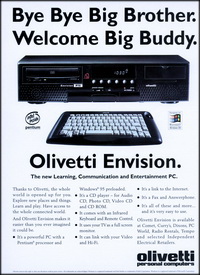 Olivetti brought out the Envision PC, a PC with a Pentium processor, Windows 95 preloaded, with a CD-ROM drive that can play audio CDs and Video CDs, an infrared
keyboard and remote control. It connected to your television via a SCART socket or to a monitor. It cost between £1400 to £2000 depending on the processor that
was included. Argos sold the P75 version for £1599.
Olivetti brought out the Envision PC, a PC with a Pentium processor, Windows 95 preloaded, with a CD-ROM drive that can play audio CDs and Video CDs, an infrared
keyboard and remote control. It connected to your television via a SCART socket or to a monitor. It cost between £1400 to £2000 depending on the processor that
was included. Argos sold the P75 version for £1599.
I bought quite a few different computer magazines back then, and PC Answers was good for reviews and information. In the September 1996 issue they reviewed four 28.8k modems, varying in price from £119 to £248. Although cover mounted CDs were becoming common, burners to make your own were expensive. A review of the Plasmon CDR4240i SCSI CD-writer had it priced at £634.50 for the internal version or £703.83 for an external. It read CDs at x4 and wrote at x2. The alternative item was a Hewlett-Packard SureStore 4020i CD Writer at £974.08.
PC Answers offered a variety of software on their cover discs over the years, including Intuit Quicken 4 (Home Financing), Fury 3 (Microsoft Windows shoot-'em up), Autodesk Animator, Virtual Snooker, a demo of Theme Hospital, Netscape Navigator 2.01 and Sonic the Hedgehog CD.
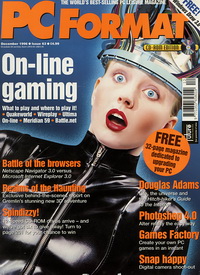
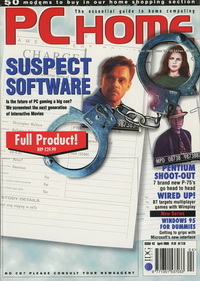
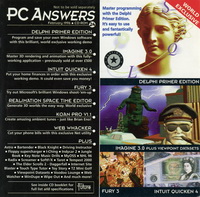
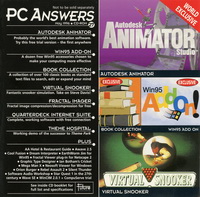
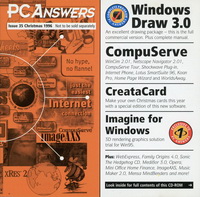
Computer Life was another tech magazine and in the March 1996 copy they reported that in the middle of March, Camelot will launch the lucky dip feature for the national lottery. The June 1996 edition had an advert for a state of the art Gateway 2000 P5-166 Sovereign PC, with a 166MHz Pentium processor, 16MB RAM, 8x CD-ROM, 2.5GB Hard drive, 17" monitor, Windows 95, Office 95 Pro and Encarta 96 for £2466.32 inc VAT. Printers were also expensive, with the Epson Stylus II Color Inkjet printer at £329. There was a review of digital cameras and one that was advertised and promoted extensively was the Casio QV-10. It took images 320x240 pixels in size and could store 96 of them in the 2MB flash memory. It was fixed focus, but has a variable shutter speed from 1/8 to 1/4000 of a second. It took 4xAA batteries which would last around two hours. Images were transferred to a PC via an RS-232 cable. It had a 2.5 inch screen on the back instead of a view finder, and cost £699.
Software available on the cover discs included the full movie trailer of GoldenEye (in a poor quality AVI file with a very small frame size), a demo of the Beavis & Butthead game, McAfee VirusScan, Warcraft II, BBS software, CompuServe, AOL and UK Online software and plenty of screensavers.
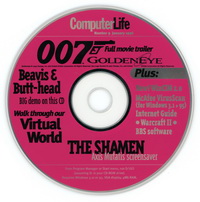
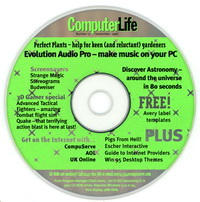
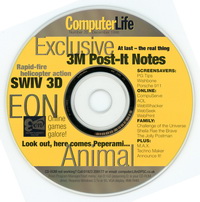
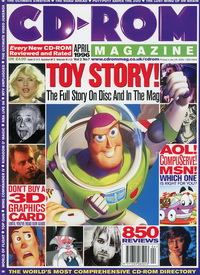 Catering to the large amount of software and films available on CD was CD-ROM Magazine. The March 1996 advertised the MPEG Direct Movie 24 Master playback
card. Computers were not capable of using the processor to playback video files, so dedicated cards were used. I had a Sigma Reel card, which was a similar
card, but this card offered full screen playback of CD-i, Video CD and MPEG files and cost £299. In the news section it was reported that America Online was
to launch in UK, named as AOL. Thousands of AOL disks would appear on the cover of computer magazines, either as floppy discs or CDs. They charged £5.95 per
month for 5 hours online, with £1.85 per additional hour. It was usually a fight between AOL or CompuServe to give internet access before other ISPs
appeared. Thomson announced they were to launch DVD players in the US in late summer from $499 and Sony, Phillips, Pioneer & Toshiba were to launch in autumn
for $600. 5 channel surround (Dolby AC-3) was only to be available in US and Japan, with MPEG2 audio in Europe. Warner Home Video pledged to release 400
titles by the end of 1996.
Catering to the large amount of software and films available on CD was CD-ROM Magazine. The March 1996 advertised the MPEG Direct Movie 24 Master playback
card. Computers were not capable of using the processor to playback video files, so dedicated cards were used. I had a Sigma Reel card, which was a similar
card, but this card offered full screen playback of CD-i, Video CD and MPEG files and cost £299. In the news section it was reported that America Online was
to launch in UK, named as AOL. Thousands of AOL disks would appear on the cover of computer magazines, either as floppy discs or CDs. They charged £5.95 per
month for 5 hours online, with £1.85 per additional hour. It was usually a fight between AOL or CompuServe to give internet access before other ISPs
appeared. Thomson announced they were to launch DVD players in the US in late summer from $499 and Sony, Phillips, Pioneer & Toshiba were to launch in autumn
for $600. 5 channel surround (Dolby AC-3) was only to be available in US and Japan, with MPEG2 audio in Europe. Warner Home Video pledged to release 400
titles by the end of 1996.
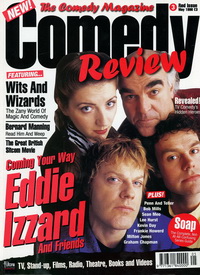
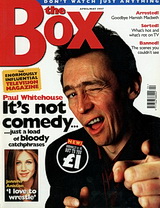 A few new magazines (that didn't last very long) came out that year, including The Comedy Review Magazine. It featured articles on Bill Bailey, Jenny Eclair,
Tim Vine, Dennis Pennis, Matt Lucas and John Shuttleworth. It had a review of complete series of The Fall and Rise of Reginald Perrin and some classic comedy
scenes from shows. The Club Crawl of Manchester featured nine stand ups, of which I had only heard of Chris Addison, Dave Gorman and Lucy Porter. It only
lasted five issues but featured all the comedy that was big at the time. Previous issues had interviews with Kevin Eldon (who's now the voice of Penfold in
the new Danger Mouse cartoon), Milton Jones, Graham Chapman (in an old interview from 1989), Eddie Izzard, Penn and Teller, Bernard Manning and a piece by
Peter Baynam. Another comedy magazine called The Box came out the following year but only lasted three issues. Tagged as 'The enormously influential
television magazine', this had a 16 page guide of what was coming up on TV during the month, including cable channels like Paramount, Sky 1, Sky 2, Bravo,
TNT as well as the terrestrial channels. The Buzz was all the TV news, which said that Doctor Who was not going to continued after the failure of the
Paul McGann movie. Then there is the Buzz in 1976, showing old TV news, including Tom Baker being picked to be the new Doctor Who. Articles included
scenes that were banned from TV, the future of television and Digital TV. The last article was interesting on how wrong and right it was, like 500
channels, BBC's side channels to complement existing channels (i.e. red button), Channel 4's specialist sports shows and arthouse movie slot, Granada
Sports Club and Sky One.
A few new magazines (that didn't last very long) came out that year, including The Comedy Review Magazine. It featured articles on Bill Bailey, Jenny Eclair,
Tim Vine, Dennis Pennis, Matt Lucas and John Shuttleworth. It had a review of complete series of The Fall and Rise of Reginald Perrin and some classic comedy
scenes from shows. The Club Crawl of Manchester featured nine stand ups, of which I had only heard of Chris Addison, Dave Gorman and Lucy Porter. It only
lasted five issues but featured all the comedy that was big at the time. Previous issues had interviews with Kevin Eldon (who's now the voice of Penfold in
the new Danger Mouse cartoon), Milton Jones, Graham Chapman (in an old interview from 1989), Eddie Izzard, Penn and Teller, Bernard Manning and a piece by
Peter Baynam. Another comedy magazine called The Box came out the following year but only lasted three issues. Tagged as 'The enormously influential
television magazine', this had a 16 page guide of what was coming up on TV during the month, including cable channels like Paramount, Sky 1, Sky 2, Bravo,
TNT as well as the terrestrial channels. The Buzz was all the TV news, which said that Doctor Who was not going to continued after the failure of the
Paul McGann movie. Then there is the Buzz in 1976, showing old TV news, including Tom Baker being picked to be the new Doctor Who. Articles included
scenes that were banned from TV, the future of television and Digital TV. The last article was interesting on how wrong and right it was, like 500
channels, BBC's side channels to complement existing channels (i.e. red button), Channel 4's specialist sports shows and arthouse movie slot, Granada
Sports Club and Sky One.
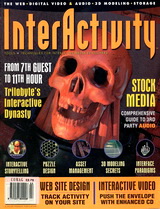 Some newsagents had American magazines available to buy in the UK, and one was InterActivity. It was tagged as 'Tools and techniques for interactive media
developers' and was divided into three sections, Features, How-To Columns and Departments. The February 1996 issue had a 22 page feature on Inside Trilobyte
(the company behind The 7th Guest), in the F.A.Q. there was an explanation on Soundfonts and in the how-to columns a guide to stock audio. The magazine
cost £2.75 (a sticker over the area where the American price was printed) and products advertised included Roland's Sound Canvas DB at £259 and Corel
CD Creator at £169.99.
Some newsagents had American magazines available to buy in the UK, and one was InterActivity. It was tagged as 'Tools and techniques for interactive media
developers' and was divided into three sections, Features, How-To Columns and Departments. The February 1996 issue had a 22 page feature on Inside Trilobyte
(the company behind The 7th Guest), in the F.A.Q. there was an explanation on Soundfonts and in the how-to columns a guide to stock audio. The magazine
cost £2.75 (a sticker over the area where the American price was printed) and products advertised included Roland's Sound Canvas DB at £259 and Corel
CD Creator at £169.99.
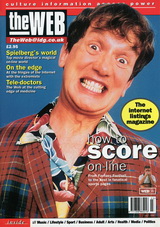 The Web was an internet listings magazine, featuring a young Frank Skinner on the cover. Search engines had only been out a couple of years, and the major ones
were Infoseek, Altavista, Webcrawler, Lycos and the Yahoo directory. The Google search engine was still being developed and wasn't available to the public until
1998 so finding websites was usually done via listing magazines. In this issue, the news section reported on CompuServe banning 200 newsgroups and listed
Cybercafes in the UK (all 39 of them). Several articles have a variety of subjects, from the Starlight Foundation to Fantasy Football Leagues. The 37 pages
of web listings covers adult, the art, bizarre, business, education, funnies, health, lifestyle, literature, media, music, on-screen, politics, sports and
technology. Each section has some news relevant to the type of sites, and each site listed has a small paragraph explaining the site, plus a score on content,
design, links and an overall score.
The Web was an internet listings magazine, featuring a young Frank Skinner on the cover. Search engines had only been out a couple of years, and the major ones
were Infoseek, Altavista, Webcrawler, Lycos and the Yahoo directory. The Google search engine was still being developed and wasn't available to the public until
1998 so finding websites was usually done via listing magazines. In this issue, the news section reported on CompuServe banning 200 newsgroups and listed
Cybercafes in the UK (all 39 of them). Several articles have a variety of subjects, from the Starlight Foundation to Fantasy Football Leagues. The 37 pages
of web listings covers adult, the art, bizarre, business, education, funnies, health, lifestyle, literature, media, music, on-screen, politics, sports and
technology. Each section has some news relevant to the type of sites, and each site listed has a small paragraph explaining the site, plus a score on content,
design, links and an overall score.
I was reviewing software for my local computer club and in 1996, Microsoft were busy with Encarta, Music Central and Cinemania 96. I still have the gold beta versions of the latter two which were a great source of information. There were quite a few encyclopaedias on CD-ROM, and I ended up reviewing four of them. Each of these discs would include monthly updates downloaded from Microsoft's site, to keep the disc up to date until the next version was released.
Music and TV
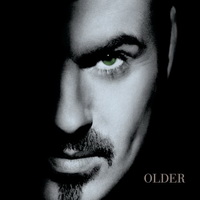
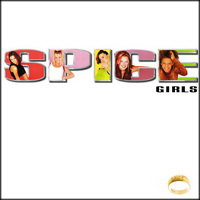 In May, George Michael released his third solo album, Older, which produced six top three singles. The Manic Street Preachers released Everything Must Go, their
fourth studio album, in the same month, which featured their UK number 2 single A Design For Life, released a month before. Beck released Odelay, his second
studio album in June, which features the single Devil's Haircut. The Pet Shop Boys release their tenth studio album, Bilingual, in September, which had five
hit singles and The Spice Girls released Spice, their debut album, in November. It reached number one in the album charts in 17 countries and had five hit
singles, including their first single Wannabe, which was number one in the UK for seven weeks.
In May, George Michael released his third solo album, Older, which produced six top three singles. The Manic Street Preachers released Everything Must Go, their
fourth studio album, in the same month, which featured their UK number 2 single A Design For Life, released a month before. Beck released Odelay, his second
studio album in June, which features the single Devil's Haircut. The Pet Shop Boys release their tenth studio album, Bilingual, in September, which had five
hit singles and The Spice Girls released Spice, their debut album, in November. It reached number one in the album charts in 17 countries and had five hit
singles, including their first single Wannabe, which was number one in the UK for seven weeks.
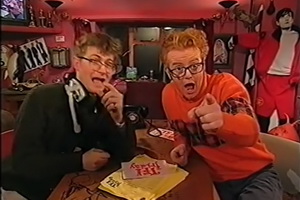 On television, some new programmes were launched, like TFI Friday on Channel 4, Changing Rooms on BBC 1, Airport and Never Mind the Buzzcocks, both on BBC 2.
The Simpsons was shown for the first time on BBC 2 and the last episode of Only Fools and Horses, Time on Our Hands, was seen on 29th December. Three Christmas
specials followed, but viewing figures were not as high. In February the last episode of Spitting Image was shown, and in May an American film of Doctor Who,
starring Paul McGann was aired, to a limp response. The show was final rebooted 9 years later in 2005. Jarvis Cocker invaded the stage during Michael Jackson's
performance of Earth Song at the Brit Awards in February.
On television, some new programmes were launched, like TFI Friday on Channel 4, Changing Rooms on BBC 1, Airport and Never Mind the Buzzcocks, both on BBC 2.
The Simpsons was shown for the first time on BBC 2 and the last episode of Only Fools and Horses, Time on Our Hands, was seen on 29th December. Three Christmas
specials followed, but viewing figures were not as high. In February the last episode of Spitting Image was shown, and in May an American film of Doctor Who,
starring Paul McGann was aired, to a limp response. The show was final rebooted 9 years later in 2005. Jarvis Cocker invaded the stage during Michael Jackson's
performance of Earth Song at the Brit Awards in February.
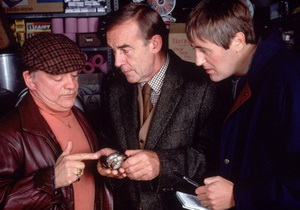
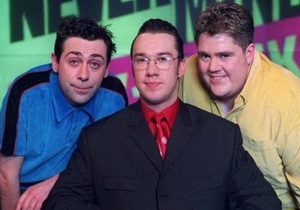
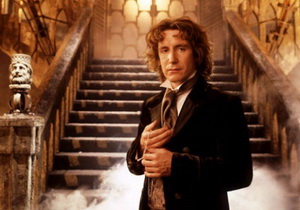
Computer Games
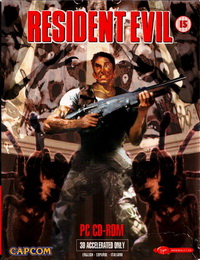
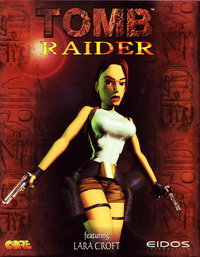
Resident Evil was released for the PlayStation, Sega Saturn and PC and spawn sequels and five films starring Milla Jovovich. It was a horror survival game, and was called Bio Hazard in Japan. Tomb Raider, the first of ten games in the series, was released for the PC, PlayStation, Game Boy and Sega Saturn. It featured Lara Croft as an archaeologist you control to find three artefacts. Two films, featuring Angelina Jolie, were made in 2001 and 2003. Wing Commander IV The Price of Freedom was a space combat simulation game and featured actors from the previous game in the series, namely Mark Hamill, John Rhys-Davies, Malcolm McDowell and Tom Wilson.
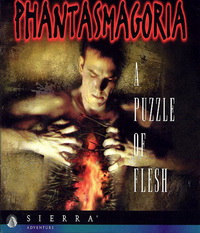
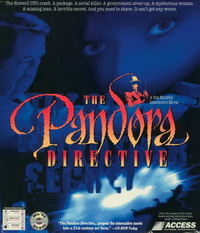 Adventure games on PCs were starting to lose their appeal, but some were still being released. Phantasmagoria A Puzzle of Flesh was the sort of sequel to
Phantasmagoria released the year before. It was an interactive movie point and click adventure and with the violence and sexual content, it was banned or
heavily censored in many countries.
Adventure games on PCs were starting to lose their appeal, but some were still being released. Phantasmagoria A Puzzle of Flesh was the sort of sequel to
Phantasmagoria released the year before. It was an interactive movie point and click adventure and with the violence and sexual content, it was banned or
heavily censored in many countries.
The Pandora Directive was the 4th in the series of Tex Murphy graphic adventure games designed by Chris Jones, who also plays the lead. Other actors featured in the game include Barry Corbin, Kevin McCarthy and Tanya Roberts. Zork Nemesis was the 11th Zork graphic adventure game but was darker than the others. Harvester was another interactive movie game but took two years to be released by which time it had become a commercial failure. It too was censored and banned in some countries.
Toonstruck was an adventure game featuring the digitized form of Christopher Lloyd in a cartoon world. Other characters were voiced by Ben Stein, David Ogden Stiers, Dan Castellaneta, Dom DeLuise and Tim Curry. Broken Sword: The Shadow of the Templars was the first of five Broken Sword adventure games. It went on to win several awards and was known as one of the great examples of the adventure game. Clandestiny was the third puzzle game from Trilobyte, who has released The 7th Guest and The 11th Hour before. The puzzles are similar, but the storyline uses cartoon characters to make the game more kid friendly.
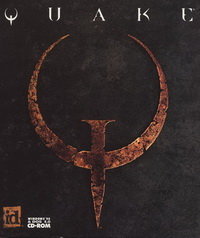
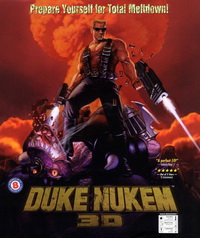 Quake was a first person shooter built upon the success of Doom, but using full real-time 3D rendering. Duke Nukem 3D was a similar game, and was ported to
many different platforms, including Sega Saturn, Nintendo 64, PlayStation. Sega MegaDrive, Xbox 360, Xbox One and iPhone. Rebel Assault II was the sequel to
the Rebel Assault game released three years before, set in the Star Wars universe. Using full motion video and pre-rendered scenes, both games looked good,
but actual game play left a lot to be desired.
Quake was a first person shooter built upon the success of Doom, but using full real-time 3D rendering. Duke Nukem 3D was a similar game, and was ported to
many different platforms, including Sega Saturn, Nintendo 64, PlayStation. Sega MegaDrive, Xbox 360, Xbox One and iPhone. Rebel Assault II was the sequel to
the Rebel Assault game released three years before, set in the Star Wars universe. Using full motion video and pre-rendered scenes, both games looked good,
but actual game play left a lot to be desired.
Other Gadgets
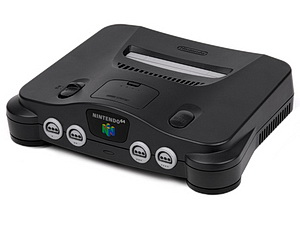
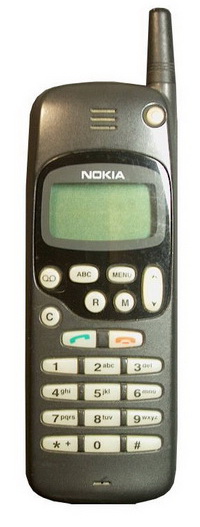 The Nintendo 64 console came out, priced at £249.99 (but $200 in the US) but it soon dropped to £100 and gave vouchers out to those who bought it at the
original price. Tamagotchi pets came out this year, and Casio released their Cassiopeia E-10, a Pocket PC. I worked in a company that developed software for
these small devices, which were the equivalent of a smart phone these days. The Palm Pilot 1000 was out as well, but ran under a different operating system.
Talking of phones, Nokia released their Nokia 1610 mobile phone, which had a small antenna built into it. I had a different model, before upgrading the popular
3210 grey model three years later.
The Nintendo 64 console came out, priced at £249.99 (but $200 in the US) but it soon dropped to £100 and gave vouchers out to those who bought it at the
original price. Tamagotchi pets came out this year, and Casio released their Cassiopeia E-10, a Pocket PC. I worked in a company that developed software for
these small devices, which were the equivalent of a smart phone these days. The Palm Pilot 1000 was out as well, but ran under a different operating system.
Talking of phones, Nokia released their Nokia 1610 mobile phone, which had a small antenna built into it. I had a different model, before upgrading the popular
3210 grey model three years later.
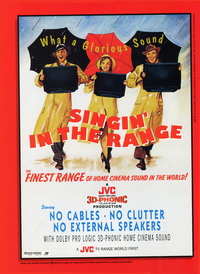
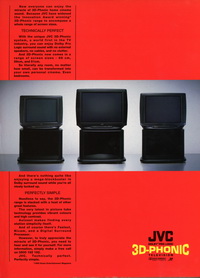 JVC were trying to sell their new range of 3D-Phonic televisions by customising famous film posters, like Singin' In The Range, How The Wires Were Lost and Hearing Is Believing. These televisions offered Nicam Stero and Dolby Pro Logic sound but
without the extra speakers or cables. There was a choice of 51cm, 59cm or 68cm sized screens, which was a 20, 23 or 26 inch (quoting metric for screen sizes didn't catch on). Teletext was popular on televisions for subtitles, news, sports, reviews
but suffered from having to wait for the particular page to appear, so Fastext (which was a feature on these) stored pages in advance so the page would instantly appear.
JVC were trying to sell their new range of 3D-Phonic televisions by customising famous film posters, like Singin' In The Range, How The Wires Were Lost and Hearing Is Believing. These televisions offered Nicam Stero and Dolby Pro Logic sound but
without the extra speakers or cables. There was a choice of 51cm, 59cm or 68cm sized screens, which was a 20, 23 or 26 inch (quoting metric for screen sizes didn't catch on). Teletext was popular on televisions for subtitles, news, sports, reviews
but suffered from having to wait for the particular page to appear, so Fastext (which was a feature on these) stored pages in advance so the page would instantly appear.
